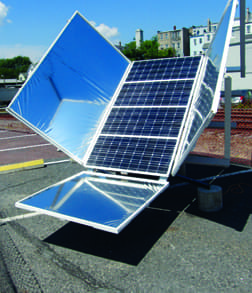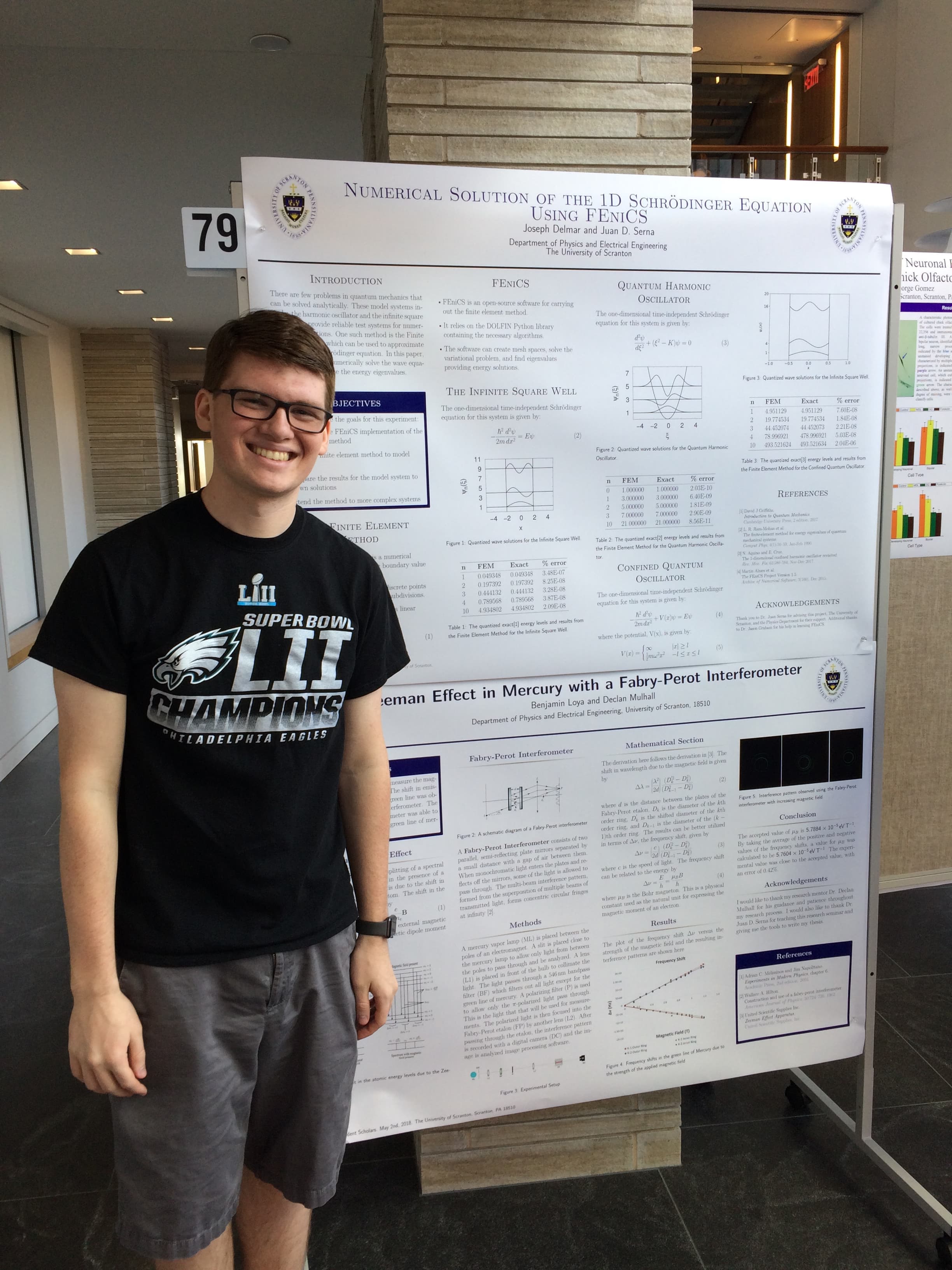Physics
Practical Experience
Students from the physics program at Scranton regularly obtain research experience off campus. Over the past 10 years, our students have received grants from the National Science Foundation (NSF) for student summer research via the NSF-REU (Research Experience for Undergraduates) program.
Some places that our physics students have done REUs are Cornell, Johns Hopkins, Michigan State, Yale and the University of Arkansas.
At the Forefront
This department is home to a unique group of faculty and students who continue to push the limits of the engineering and applied physics. With constant exchange and collaboration, the program stays at the forefront of exciting theoretical research and experimentation.
With state-of-the-art equipment like lasers, good photon detectors, Scranton can compete with top STEM schools. The modern physics lab is equipped with experiments in Muon detection, x-ray and visible light diffraction, nuclear magnetic resonance and more.

The physics program had a grant-funded, student-supported project led by physics professor Joe Connelly for several years. Students helped write a book and physics course about the physics of bicycles.
Professor Joe Connelly on his work with students:
“Students helped work on the bicycle project for many years. They helped me with some of the drawings and we went out on the street and rode a bike and helped with experiments. My basic philosophy is that bikes are fun, physics is fun.”
Opportunities and Research
A Scranton physics education keeps students ahead of the curve by offering exciting opportunities, such as:
- Early access to specialized software and hardware. Use state-of-the-art tools to challenge yourself as you push the limits of technology—our students regularly win regional competitions and national awards based on their research.
- Collaborative exploration. Work closely with peers and faculty mentors as you explore advanced systems. The physics program encourages a team-based approach like you will encounter in the real world. The continuous exchange and feedback will push you further than you thought possible.
- Industry exposure. Build your resume and your network as your get real-world inspiration in the field. Get insight from industry professionals who regularly visit campus. Explore your interests with faculty-mentored projects. Challenge yourself by competing in physics competitions at the IEEE conferences.
"Our professors are always there to help, but I am responsible for the work I put forward and the completion of my project, which has helped me prepare for future work."
Natalie Krupka '20, Physics Major
 Several years ago, the University received a grant from the Sustainable Energy Fund (SEF) to study solar panels that adjusted their orientation relative to the position of the sun. Faculty and students worked together to engineer the Reflective Solar Tracker (RST). The patent-pending RST produces 140 percent more energy than a stationary solar panel on sunny days. And on cloudy days? The computer uses astronomical data from the United States Naval Observatory to track where the sun actually is, maximizing energy output. Read about how they helped a community in Africa because of the invention, here.
Several years ago, the University received a grant from the Sustainable Energy Fund (SEF) to study solar panels that adjusted their orientation relative to the position of the sun. Faculty and students worked together to engineer the Reflective Solar Tracker (RST). The patent-pending RST produces 140 percent more energy than a stationary solar panel on sunny days. And on cloudy days? The computer uses astronomical data from the United States Naval Observatory to track where the sun actually is, maximizing energy output. Read about how they helped a community in Africa because of the invention, here.
Student Researches Rocket Fuel
Under the direction of Nick Truncale, faculty specialist, Natalie Krupka ’20 (right), a physics major, researched rocket fuel. "To observe the emission and absorption spectrum of rocket fuel, we will be using a PASCO spectrometer in two ways: known light absorption spectrum
Read more about Krupka's undergraduate research here and her current research here.
Computational Physics Research Project
 Student Joseph Delmar, who will go on to study physics after graduation, has done a variety of different computational physics projects at Scranton. Currently, he is working with Dr. Juan Serna on using numerical methods to solve the Schrodinger equation for nonlinear systems. At the University of Arkansas, he worked with Dr. Salvador Barazza-Lopez on theoretical/computational solid state physics research. This involved carrying out simulations on the University Arkansas's Trestles supercomputer to see how increased temperature affected the phase transitions of two-dimensional silicene, stanene
Student Joseph Delmar, who will go on to study physics after graduation, has done a variety of different computational physics projects at Scranton. Currently, he is working with Dr. Juan Serna on using numerical methods to solve the Schrodinger equation for nonlinear systems. At the University of Arkansas, he worked with Dr. Salvador Barazza-Lopez on theoretical/computational solid state physics research. This involved carrying out simulations on the University Arkansas's Trestles supercomputer to see how increased temperature affected the phase transitions of two-dimensional silicene, stanene 
"The Modulation of Laptop Vibrations," is another research project done by physics major Natalie Krupka. Her research attempts to "sniff" typed keystrokes on a laptop.







